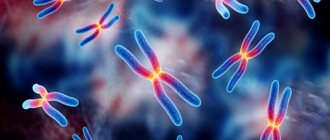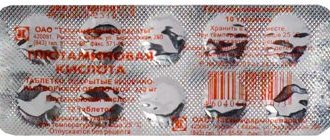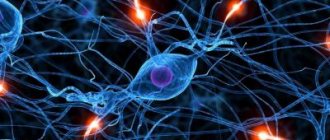Types of catatonia
Catatonic syndrome in psychiatry is divided into several types, which makes diagnosis difficult and requires an individual approach to each case.
Catatonic schizophrenia is a mental disorder characterized by a state of stupor and agitation. This condition is similar to the symptoms of schizophrenia. The patient may be immobilized for a long time or behave excessively excited and inappropriately. It is a rare type of schizophrenia, occurring in 2% of patients. With catatonic schizophrenia, the symptoms are quite varied, manifested by attacks of aggression, hallucinations and other disorders.
Lucid catatonia
https://www.youtube.com/watch?v=watch
With lucid catatonia, the patient retains orientation in space and time, memory is not impaired, but there is increased muscle tension. There are no delusional, obsessive ideas, seizures or confusion, there is involuntary agitation, stupor with numbness.
With this syndrome, work in the deep parts of the brain is preserved, but at the same time, disturbances occur in the parts that are responsible for motor activity, which causes inhibition.
Febrile catatonia is a form of schizophrenia and can manifest itself in the form of various disturbances of consciousness. Clinical signs are quite pronounced and are accompanied by somatic and mental disorders. A distinctive feature of this form of the disease is considered to be an increase in body temperature or its fluctuation from low to high levels.
With febrile catatonia, patients have severe tachycardia, a grayish-sallow complexion, sunken eyes, and rapid breathing. In the acute period of the disease, there is a high probability of death, which manifests itself as a result of vascular damage and cerebral edema.
History of disease research
Since its initial description, catatonia has remained a poorly defined clinical condition characterized by impaired motor behavior originally described in the presence of another severe mental illness. It is a complex syndrome that has undergone significant evolution since it was originally described as a subtype of schizophrenia. The condition is now thought to result from a variety of medical and psychiatric conditions and may be more related to mood disorders than schizophrenia.
It is noted that one of the main reasons for the frequent misdiagnosis of catatonia is the persistent misconception that it is synonymous with schizophrenia. However, this proposal was not universally accepted, and much debate arose regarding the most appropriate classification of catatonia. It was Carl Ludwig Kahlbaum who first saw the connection between psychomotor symptoms and mental disorders in 1874. And this year he coined the term “Die Katatonie” to describe the syndrome “with a cyclical alternating course in which the mental symptoms are successively the following: melancholy, mania, stupor, confusion and, ultimately, dementia.” He also combined 17 movement disorders into a single syndrome in patients with a variety of disorders, including mood disorders, psychosis, neurosyphilis, tuberculosis and epilepsy.
In 1899, Emil Kraepelin proposed that catatonia should be classified phenomenologically along with other forms of dementia precoxa or dementia precoxa (the obsolete name for schizophrenia): hebephrenia and paranoia. And by 1913, catatonia had become “1 of 8 subgroups into which schizophrenia was divided. Thus, in the works of Kraepelin and Bleuler, catatonia became synonymous with behavioral immobility and abstinence, a symptom often associated with schizophrenia, and was subsequently classified as schizophrenia, although not all authors of that time shared this point of view. This has led to ongoing controversy in the Diagnostic and Statistical Manual of Mental Disorders (DSM). Thus, in the DSM-I and DSM-II and in the International Classification of Diseases (ICD), catatonia was classified as a type of schizophrenia, and this assumption was formalized throughout the life of the DSM-III classifier.
This began to change in the 1970s, when researchers noticed that catatonia was more closely associated with mood disorders and idiopathic or primary disorders than with schizophrenia. For example, Fink and Taylor argued that catatonia should not be associated exclusively with schizophrenia. This led to the 1994 DSM-IV recognizing catatonia as a disorder that could either complicate general health or be a feature of mood disorders. At the same time, debate continued to support catatonia as a separate diagnostic category.
The development of rating scales and more effective screening procedures led to the discovery that 9% to 17% of patients in psychiatric institutions and emergency departments met criteria for catatonia—even more among patients with mood disorders or toxic conditions than among patients with schizophrenia. It has also more recently been suggested that catatonia is relatively common among patients diagnosed with autism, particularly in autistic children.
In addition, there is increasing recognition of “secondary” catatonia, which develops due to organic causes such as neurological diseases (including tumors), drug intoxication or withdrawal, and other metabolic disorders, including paraneoplastic syndromes. On a larger scale, catatonia has been associated with other neuropsychiatric syndromes such as delirium, serotonin syndrome, and neuroleptic malignant syndrome.
In a review, Wijemann and Jankovic emphasized 2 subtypes of this disorder: malignant and periodic. Malignant catatonia is the most severe form of this syndrome and is more common in the presence of organic disease, illicit or therapeutic drug toxicity, or other metabolic encephalopathy. Intermittent catatonia is characterized by repeated episodes of illness lasting 4 to 10 days, which can occur over many years. This condition appears to be less common than the malignant form and is reported as an autosomal dominant disorder. Intermittent catatonia is often noted among patients with bipolar disorder, in which the patient oscillates between stupor and agitation.
Causes
- Mental disorders
- Neurological diseases
- Somatic diseases and conditions Cerebrovascular diseases[14]
- Thrombocytopenic purpura[4]
- Metabolic disorders[4][13], endocrinopathies[12] (hyponatremia, Wilson's disease, Tay-Sachs disease[4], hypo- and hyperthyroidism, hypo- and hyperadrenalism, vitamin B12 deficiency[13])
- Hypercalcemia[14], homocystinuria[en][14], diabetic ketoacidosis[en][14], hepatic encephalopathy[14]
- Viral infections (including HIV)[12]
- Severe infectious diseases suffered in childhood (including rheumatic fever)[4]
- Typhoid fever[12]
- Paraneoplastic syndromes[1][13]
- Autoimmune diseases[12] (in particular vasculitis[13])
- Oxygen starvation[13]
- Heatstroke[12]
- Taking antipsychotics (neuroleptic malignant syndrome)[15][16], anticonvulsants, corticosteroids, disulfiram, cyclobenzaprine[13], ciprofloxacin[4]
In a significant minority of patients with catatonia, no cause is identified (so-called idiopathic catatonia)[4].
Fink and Taylor introduced the term “catatonic spectrum” to refer to the entire range of manifestations of catatonia[17].
There are three forms of catatonic excitation:
- Pathetic catatonic excitation is characterized by gradual development, moderate motor and speech excitation. There is a lot of pathos in the speech, and echolalia may be noted. The mood is elevated, but has the character not of hyperthymia, but of exaltation, and causeless laughter is periodically noted. As symptoms increase, features of hebephrenia appear—hebephrenic-catatonic agitation. Impulsive actions are possible. There are no disturbances of consciousness.
- Impulsive catatonic arousal develops acutely, actions are rapid, often cruel and destructive, and are socially dangerous. Speech consists of individual phrases or words, characterized by echolalia, echopraxia, and perseveration. When this type of catatonic excitation is extremely severe, the movements are chaotic and can acquire a choreiform character, and patients are prone to self-harm.
- Mute (silent) excitement is chaotic, meaningless, unfocused excitement with aggression, violent resistance, causing severe damage to oneself and others.
Catatonic stupor is characterized by motor retardation, silence, and muscle hypertension. Patients may remain in a constrained state for several weeks or even months. All types of activity are impaired, including instinctive. There are three types of catatonic stupor:
- Stupor with waxy flexibility (cataleptic stupor) is characterized by the patient freezing for a long time in the position he has adopted or given to him, even a very uncomfortable one. Without reacting to loud speech, they can respond to quiet, whispered speech, spontaneously disinhibit in the silence of the night, becoming available to contact.
- Negativistic stupor is characterized, along with motor retardation, by the patient’s constant resistance to any attempts to change his posture.
- Stupor with numbness is characterized by the greatest severity of motor retardation. Patients assume and maintain the fetal position for a long time; an air cushion symptom may be observed.
Syndromokinesis
Mutual transitions from one type of stupor to another, pathetic excitement to impulsive, are possible, although this is observed quite rarely. Mutual transitions of catatonic excitation into stupor and vice versa are possible: pathetic excitation can be replaced by cataleptic stupor, impulsive – by negativistic or stupor with numbness, just as stupor can be suddenly interrupted by the corresponding type of excitation.
Catatonic syndrome can have various manifestations, including in the form of yactation[18].
With cataleptic stupor, hallucinations, delusional disorders, and sometimes signs of disturbance of consciousness of the oneiroid type - the so-called. oneiric catatonia, upon recovery from which most of the productive symptoms are amnesic. Negativistic stupor and stupor with numbness are represented by the so-called.
Despite advances in modern medicine and psychiatry, the exact causes of catatonic seizures are unknown. However, there are several theories as to why this disease may develop. These include:
- affective states;
- bipolar depression;
- mental disorders of the postpartum period;
- mental retardation;
- stroke;
- traumatic brain injuries.
According to medical observations, the catatonic manifestation of the disease can be the result of various somatic diseases, including:
- Werlhof's disease;
- endocrine diseases;
- autoimmune pathologies;
- tumors of a benign or malignant course.
Catatonic syndrome often occurs in drug addicts or people who have taken strong medications for a long time. Often, pathology can manifest itself against the background of poisoning of the body with poisons or toxins. Based on the large list of reasons that can trigger the development of this syndrome, it is important, at the first manifestations of the disease, not to delay visiting a doctor and undergoing a comprehensive diagnosis.
A feature of the pathology is the variety of manifestations, which often complicates timely diagnosis. Depending on the type, patients may suffer from speech transformation that becomes monotonous. Impulsive excitement can occur. The main characteristic feature is the patient’s “freezing” in strange, non-human positions. Socially dangerous behavior is observed.
Clinical manifestations
Catatonia includes two states - excitement and stupor.
Three types of excitation in catatonic syndrome have been described:
- pathetic subspecies;
- impulsive form;
- silent flow.
The first variant of catatonic syndrome is characterized by the gradual formation and intensification of psychomotor agitation. The patient's speech becomes pretentious. The person begins to repeat words and phrases he has heard to others. Elevated mood is detected. From time to time the patient laughs for no reason. The behavior shows traits of childishness and foolishness. Actions become impulsive.
In the second option, the symptoms of the disorder develop rapidly. The patient is found to perform destructive, socially dangerous actions. The patient's speech is represented by a set of individual meaningless words and phrases. Motor activity is chaotic.
The “silent” version of catatonic arousal implies the patient’s chaotic and senseless activity, resistance, aggression towards other people, and causing physical harm to himself.
Stupor in catatonic syndrome is characterized by significant motor retardation and impairment of all types of activity. A person often remains in complete silence for several months. Three types of stupor in catatonia have been described:
- cataleptic subspecies;
- negativistic form;
- numbness.
In the first option, the patient freezes in one body position for a long time. He does not respond to messages given in a loud voice, but is able to respond to messages spoken in a whisper. The patient becomes capable of contact spontaneously, most often this happens at night in complete silence.
The second option involves a combination of motor retardation with attempts to resist the doctor who is trying to change the patient’s position.
The third option is the most profound form of motor retardation. The patient assumes the fetal position and remains in it for a long time.
Catatonic syndrome is a complex symptom complex, which is represented by the development of over twenty different symptoms. Typical signs of catatonia are the following conditions:
- Aversion is a deliberate turn of the head and body from the interviewer.
- Automatic compliance is a condition characterized by the patient’s complete agreement with the orders pronounced by the doctor.
- Ambitiousness implies immediate submission and resistance to received instructions.
- Blocking is the spontaneous cessation of a movement being performed.
- Verbigeration is the repetition by a person from time to time of meaningless syllables, words or phrases.
- Agitation is excessive, meaningless, undirected psychomotor activity.
- The “air cushion” symptom is a phenomenon in which a person lifts his head from the bed, lifts it above the surface of the bed and maintains this position for a long period of time.
- Wax flexibility is a phenomenon that involves a person being in an extremely uncomfortable position, which was specially given to the body by a doctor. In this case, the patient does not make any attempts to change the position to a more comfortable position.
- Grimacing is an overly pretentious facial expression that does not correspond to the internal state and external circumstances.
- Withdrawal is a lack of desire for contact with other people.
- Catalepsy is the suspension of voluntary movements, the disappearance of the proper response to stimuli.
- Logorrhea is continuous, incoherent, monotonous speech.
- Manners are repetitive, monotonous movements, the execution of which has no meaning.
- Mutism is a complete refusal of verbal communication.
- Muscular resistance is the ability to overcome external resistance.
- Negativism is a phenomenon when a patient demonstrates resistance to a doctor who is trying to move parts of his body. The patient returns the body parts to their original position.
- Immobility is a complete lack of motor activity.
- Perseverations are persistent obsessive repetition of certain movements that have lost their original meaning.
- Compliance is an extreme form of submission. The patient returns to the original position, even if they try to move his body parts.
- Pretentious poses involve the patient remaining in the same body position for a long time. The typical position of the patient is a “crucified” figure.
- Rigidity is a sharp increase in the tone of anatomical structures.
- Stereotypes are the persistent reproduction of movements devoid of any meaning, for example: nodding the head.
- Stupor is complete immobility of a person, combined with a lack of reaction to external stimuli. Passive negativism or waxy flexibility is observed. The patient does not come into contact with others and does not respond to changes in the external environment.
- The grasp reflex is an involuntary movement of the hands performed in order to touch or grasp the hand of the doctor conducting the examination.
- Maximum possible eye opening.
- Echolalia is an uncontrolled automatic repetition of words and phrases after another person.
- Echopraxia is imitation, copying the gestures and actions of another person.
In addition to the above symptoms, in the malignant form of catatonia, there is a significant increase in body temperature, lability of the autonomic nervous system, and twilight stupefaction.
Development mechanism
Although the exact mechanism for the development of catatonia is not known, there are many hypotheses:
- “Top-down modulation” in the basal ganglia due to cortical GABA deficiency may underlie the motor symptoms of catatonia. This hypothesis explains the pronounced therapeutic effect of benzodiazepines, which increase the activity of GABA. It is also believed that catatonia is based on increased glutamate activity.
- Another hypothesis is that catatonia is caused by a sudden and massive blockade of dopamine. This assumption explains why antipsychotics that block dopamine are often of no benefit in catatonia and may actually worsen the condition.
- Catatonia following clozapine withdrawal is said to be due to the resumption of increased activity of the cholinergic and serotonergic systems after discontinuation of this drug.
- In chronic catatonia with obvious speech impairments, positron emission tomography revealed bilateral metabolic disorders in the thalamus and frontal lobes.
- There is a hypothesis according to which catatonia can be understood as an evolutionary reaction of fear in herbivores when encountering carnivores: this reaction is now manifested in many severe mental or somatic diseases, in which catatonic stupor may represent a typical, “end state” response to a feeling of impending doom .
What reasons lead to the development of catatonia?
Until recently, it was believed that the catatonic syndrome is most often an integral component of the catatonic form of schizophrenia. However, recent studies increasingly indicate that catatonia is the destiny of affective disorders (affecting the emotional background of the individual).
Currently, possible causes of the development of catatonic syndrome may include:
- Mental disorders: affective disorders (most often mania, less often depression);
- schizophrenia;
- autism spectrum disorders;
- postpartum disorders;
- conversion (hysterical) disorders;
- post-traumatic stress disorder, etc.
- Tourette's syndrome;
- various endocrinopathies, metabolic disorders;
- cerebrovascular diseases;
- past infectious diseases;
- hepatic encephalopathy, homocystinuria;
- autoimmune diseases;
- paraneoplastic syndromes, etc.
- Taking certain medications and drugs:
- taking antipsychotics, corticosteroids, some antibacterial drugs;
- cocaine addiction;
- lead poisoning, carbon monoxide poisoning, etc.
As you can see, there are many reasons leading to the development of catatonic syndrome. However, most often catatonia is a manifestation of mental illness.
Photo: https://pixabay.com/illustrations/schizophrenia-woman-women-face-388869/
In a rare percentage of cases, it is impossible to determine the exact cause of the catatonic syndrome; in such situations it is customary to talk about idiopathic (primary) catatonia.
Eliminating negative symptoms of schizophrenia
Although most cases of treatment resistance focus on the persistence of positive symptoms, there is increasing recognition of the importance of problems associated with persistent negative symptoms. Double-blind studies have shown that clozapine and other new generation antipsychotics (risperidone, olanzapine, quetiapine) are more effective in reducing negative symptoms than typical antipsychotics.
[68], [69], [70], [71], [72], [73]
Clinical signs of the disease depend on the age of the patient and the form of the disease. For example, in young children, pathology can manifest itself in the form of repeating words and movements after those around them. In older children, adolescents and adults, this condition has clear symptoms, which may be accompanied by hysteria, loud screams, crying or stupor, which can last for several hours. Based on their manifestations of the syndrome, the clinical picture of the disease is divided into two categories, each of which has its own characteristic signs.
https://www.youtube.com/watch?v=https:accounts.google.comServiceLogin
The presence of pathology can be determined by the symptoms of catatonic syndrome. It is necessary to contact for consultation at the first manifestations of the diagnosis. Timely initiation of treatment speeds up recovery.
The list of the most common symptoms includes:
- persistent repetition of facial expressions and movements surrounding stereotypy;
- counteracting attitude negativism;
- echo symptoms, in which the patient involuntarily repeats phrases and words;
- isolation;
- mutism, characterized by the patient’s inability to speak with full health of the speech apparatus;
- a strange body position with the head elevated, called “air cushion syndrome”;
- the grasping reflex, which manifests itself in the unreasonable grasping of surrounding objects;
- the presence of pathological flexibility;
- excessive facial expressions, grimaces;
- hypertrophied wide eyes.
The number of symptoms accompanying catatonic disorders is varied. Only a doctor can make an accurate determination. Some of them are particularly common. For example, the proboscis symptom noted in catatonic syndrome.
The position of the lips, in which, due to muscle contraction, they are constantly extended forward and form a “tube,” is a natural stage in the development of the facial muscles and facial expressions of a child in the first year of life. When pathology appears in an adult, it indicates the possible onset of catatonia.
Often proboscis syndrome is not accompanied by other manifestations of stupor or increased excitability. To eliminate the pathology, you need to contact a psychiatrist.
Providing medical care
Therapy is carried out in an inpatient psychiatric clinic.
Patients often pose a threat to themselves and those around them. In such circumstances, the patient is restrained and sedatives are administered. Patients require quality care, monitoring, and vital sign checks. The main treatment strategy for catatonic syndromes is to prescribe benzodiazepine drugs (Lorazepam, Diazepam), as well as electroconvulsive therapy.
Motility stabilizers (Lithium, Carbamazepine, Valproic acid) and NMDA receptor antagonists (Amantadine, Memantine) are also considered effective drugs. It is also recommended to prescribe dopamine agonists (Bromocriptine) and muscle relaxants (Dantrolene sodium).
With this disease, the patient may not drink or eat for a long time, which causes exhaustion and dehydration. Due to a long stay in a stationary state, thrombosis of the deep veins and pulmonary artery can develop. The development of pulmonary embolism is also possible.
Treatment of agitation and insomnia
In psychiatry, there are three main forms of the disease:
- Pathetic – has a slow development. Initially, the patient has increased arousal, he is emotional, sometimes does funny things, and is a little foolish. In this condition, the patient’s consciousness is completely preserved, but increased psycho-emotional arousal and causeless laughter should alert others.
- Impulsive – appears suddenly, progresses quickly. A person from a calm state quickly becomes aggressive and cruel, and can persistently say the same words or phrases several times. This behavior is often dangerous for others because the person is not able to control his emotions and behavior.
- Mute is an extremely dangerous form of the disease. The patient can silently cause harm to himself and others, splashing out aggression. Refers to the most severe forms of the disease, which requires isolation of the patient.
Often, immediately after hospitalization, patients experience agitation and hostility. Usually, agitation can be reduced by placing the patient in a calm, controlled environment. Additionally, to calm the patient, lorazepam (0.5-2 mg), which has an anxiolytic and hypnotic effect, can be prescribed.
Lorazepam is usually used for a short time necessary to normalize the patient's behavior. Most patients respond favorably to a calm and measured environment; the need to prescribe lorazepam persists only for 1-2 days. If short-acting benzodiazepines are contraindicated, then antipsychotics are used to suppress agitation in a relatively high dose - for example, haloperidol (1-5 mg orally or 1-2 mg intramuscularly) or droperidol (1-2 mg intramuscularly).
These drugs should be considered reserve drugs due to the possibility of developing extrapyramidal disorders, including dystonia. Droperidol should only be administered when conditions are available for emergency correction of possible cardiovascular dysfunction, as this drug, although rare, can cause life-threatening collapse. Just like lorazepam, these drugs are prescribed for a limited period (the first 1-2 days of hospitalization).
A second complication of an acute psychotic episode that often requires treatment is sleep disturbance. The drug of choice in this case is also benzodiazepines (for example, lorazepam). If they are contraindicated, then diphenhydramine or chloral hydrate can be used as a sleeping pill. The prescription of sleeping pills should also be limited in time, since normalization of sleep usually occurs within 1-2 weeks after the onset of an acute psychotic episode.
Catatonic schizophrenia - treatment
Treatment of the catatonic form of schizophrenia, as well as other forms of this disease, can be divided into the following stages. After drug treatment of catatonic schizophrenia in a hospital, the question of long-term anti-relapse (preventive) therapy and rehabilitation is raised. The dose of antipsychotic drugs is reduced or switched to prolonged forms of medications with long-term effects. If the dynamics are positive, the patient can receive treatment on an outpatient basis at home. Here, control from relatives is extremely important, since patients with schizophrenia do not always consider themselves mentally ill and requiring treatment. They have an azognostic attitude towards the disease - “I’m not sick, why should I take medications?”
And if, after the end of the exacerbation, the patient has formed a critical attitude towards the disease, and he, independently or under the “sensitive” control of his relatives, takes anti-relapse or preventive therapy for a long time (from 5 to 7 years), then there is every chance of developing a stable remission and the opportunity to become fully adapted in society or even completely healthy.
There is no need to label or stigmatize such a person. Many famous people have had or lived with mental health problems and have achieved success. Therefore, a patient with schizophrenia is not lost to society, he simply requires proper treatment for social adaptation.
Differential diagnosis
At the initial consultation, the psychiatrist conducts a conversation with the patient (if possible) or his relatives, prescribes a series of examinations that will help determine the cause, determine the form and severity of the pathology, and select the necessary treatment. Diagnostics consists of the following examinations:
- laboratory blood tests;
- immunogram;
- CT or MRI of the brain;
- encephalography.
If necessary or to obtain a full clinical picture of the disease, the patient may be prescribed other examination methods, the results of which will help identify concomitant diseases, make the correct diagnosis, and prescribe the necessary treatment.
To obtain a complete clinical picture and make a correct diagnosis, the examination should be carried out no later than 14 days after the attack.
Catatonic agitation
Catatonic excitation can also go through several stages in its development.
Catatonic confused-pathetic excitement
With confused-pathetic excitement, the patient’s behavioral and facial reactions and statements acquire a “pompous”, “pompous”, “mannered” character. The patient’s movements and postures become “theatrical,” speech includes neologisms (words and their combinations that are understandable only to the patient), thinking becomes fragmented (grammatically correct sentences are meaningless). The phenomena of echolalia (the patient “automatically” repeats words spoken by someone present) and echopraxia (repeated reproduction of movements) are noted.
Catatonic catatonic-hebephrenic agitation
Hebephrenic syndrome (Kerbikov triad)
With catatonic-hebephrenic excitation, the “pompousness” of manifestations is replaced (against the background of increasing severity of the “motor” component) by their stereotypy and “foolishness” (up to “moria”). In general, as the severity of catatonia increases, motor excitation becomes more intense (up to a “motor storm” with “silent” excitation), and the possibility of verbal contact with the patient progressively decreases.
Complications
Severe complications of catatonia can include disruption of contact with the patient due to mutism or other symptoms, immobility, lack of care (including in long-term care facilities such as nursing homes, state psychiatric hospitals), excessive pessimism of doctors regarding the condition of patients when the condition is mistakenly assessed as hopeless, which leads to passivity in terms of treatment and prevention of complications.
The following severe complications are possible in patients with catatonia:
- pneumonia due to aspiration, malnutrition or other causes
- venous thrombosis and pulmonary embolism
- pneumothorax, bronchopleural fistula
- disorders of the gastrointestinal system (constipation and intestinal obstruction, esophagitis, diarrhea, bacterial colonization of the stomach, etc.)
- metabolic consequences of tube feeding (hypoglycemia, hypercapnia, electrolyte disturbances)
- caries, gum disease, fungal infections of the oral cavity
- skin lesions (bedsores)
- urinary retention, urinary incontinence, urinary tract infections
- vaginal infections in women
- neuromuscular complications (flexion contracture, nerve palsy)
Treatment of the disease
Treatment for catatonia depends on the underlying cause and may include benzodiazepines (tranquilizers), antidepressants, muscle relaxants, and antipsychotic drugs (if schizophrenia is present). Medical treatment for this condition will also vary depending on additional conditions: that is, whether the patient has co-occurring mental disorders or other illnesses. For example, if a patient has a vitamin deficiency, he is also treated with additional nutrients.
Because catatonia is so often associated with schizophrenia or considered a form of psychosis, it is often mistreated with antipsychotic medications. Catatonia generally has a low response rate to antipsychotics of only 7.5% and should be avoided. Their administration may also complicate the clinical picture and contribute to the development of neuroleptic malignant syndrome in patients with catatonia. It is noted that in all patients with catatonia, potential toxic precipitants should be eliminated, and general medical and/or neurological conditions should be treated.
Doctors usually treat catatonia with a sedative called a benzodiazepine, which is often used to relieve anxiety. But it is worth considering the fact that if the patient, in addition to catatonia, also has schizophrenia as the main psychiatric diagnosis of schizophrenia, then treatment with a benzodiazepine may be less effective. According to research data, the response to this drug was observed in only 59.1% of patients with catatonic syndrome complicated by schizophrenia. Despite the fact that the response in patients suffering from other psychiatric diagnoses was more than 90%. This poorer response to treatment in patients with schizophrenia may be due to chronic symptomatology, or it may indicate a different pathophysiology. However, benzodiazepines can be effective in treating catatonia in many patients with schizophrenia and their therapeutic use is warranted. This is especially true given the general safety of benzodiazepine drugs.
Another treatment option is electroconvulsive therapy (ECT). It sends electrical impulses to a person's brain through electrodes placed on his head. During this procedure, patients are given medication to help them sleep. Electroconvulsive therapy may be recommended if sedatives and other treatments do not help the patient or if catatonia is severe. Benzodiazepines and ECT can be used together because they have a synergistic effect, but the doctor will prescribe a lower dose of the benzodiazepine because it may raise the seizure threshold.
Most patients respond well to treatment for catatonia, with up to 80% achieving relief with benzodiazepines or barbiturates and the remainder improving with ECT. However, some patients appear to be resistant to treatment, especially ECT. Possible reasons for this treatment resistance may include chronic symptoms, delayed diagnosis, high seizure threshold, and inappropriate use of ECT (eg, insufficient number of sessions, short session duration, procedural failures, etc.).
It is also worth considering the fact that patients with catatonia may experience a high temperature (≥39 °C), associated with various forms of malignant catatonia, such as delusional mania (manic-catatonic syndrome). This condition is called “febrile catatonia” and is life-threatening, requiring intensive medical treatment. In this case, patients are prescribed lorazepam.
Treatment methods
Treatment of catatonic syndrome is carried out in a hospital setting (psychiatric clinic). It consists of taking medications from different pharmacological groups, which help relieve the symptoms of the disease. Drug treatment consists of taking medications from the following groups:
- benzodiazepines – “Diazepam”;
- muscle relaxants – “Dantrolene”;
- antiglutamate agents – “Memantine”;
- neuroleptics - Aminazin, Sonapax.
- mood stabilizers – Carbamazepine;
- sleeping pills - Zolpidem.
All medications used are potent, so they can be taken strictly as prescribed by your doctor. Considering that patients with catatonic syndrome are not able to think correctly, medications should be given to them by a medical professional or relatives if the person is undergoing outpatient treatment.
Treatment often includes electroconvulsive therapy (ECT), which involves using an electrical shock to induce brain spasms. The procedure is effective for stupor, severe depression or aggressive behavior, and helps to reduce or eliminate severe symptoms.
It is impossible to cure catatonic syndrome, but as medical practice shows, with timely diagnosis and proper treatment, stable remission can be achieved.
If traditional treatment for schizophrenia is unsuccessful, it should be treated with alternative therapies. These include adjuvant drugs, reserpine and electroconvulsive therapy (ECT). Since the effectiveness of these methods cannot be considered proven, they can only be used in certain situations.
Lithium preparations
The addition of lithium allows some patients with schizophrenia to overcome resistance to treatment. To evaluate the effectiveness of lithium use, a 4-week trial course is sufficient. Although lithium is more effective in patients with affective disorders, its administration also produces positive results in other categories of patients. Lithium has been reported to reduce hostility in resistant patients and may be particularly helpful in cases of agitation.
Although studies of the effectiveness of lithium (as an adjuvant drug) in patients with treatment-resistant schizophrenia have yielded positive results, they have been conducted on small groups of patients. Therefore, the effectiveness of lithium cannot be considered proven. Use caution when combining lithium with a typical antipsychotic or clozapine due to the risk of delirium and encephalopathy.
Anticonvulsants
https://www.youtube.com/watch?v=ytpressru
Carbamazepine and valproic acid are effective in bipolar affective disorder with psychotic features. However, they are often used as an aid in schizophrenia. Several controlled studies have shown the undoubted effectiveness of carbamazepine as an adjuvant in patients with schizophrenia, but these studies included a small number of patients.
Carbamazepine should be used with caution as it may cause confusion, ataxia and agranulocytosis. In addition, carbamazepine can reduce the concentration of haloperidol in the blood by approximately 50%. Due to the danger of toxic hepatitis, caution must be observed when prescribing valproic acid.
[40], [41], [42], [43], [44], [45], [46], [47], [48], [49]
Benzodiazepines
There are several reports of the use of benzodiazepines as an adjuvant in treatment-resistant schizophrenia. The results have been mixed: some double-blind studies have shown a beneficial effect of benzodiazepines, while others have shown ineffective use.
Since irritability and anxiety are common in patients with schizophrenia, it is not surprising that benzodnazepines are often prescribed to them. But caution should be exercised when prescribing these drugs, since their use may lead to constant drowsiness, fatigue, ataxia, drug dependence, and behavioral disinhibition.
[50], [51], [52], [53], [54], [55], [56], [57], [58], [59]
Antidepressants
Many people with schizophrenia experience depression during the acute episode and are often demoralized during the chronic phase. Antipsychotics may increase symptoms of depression. In the past, antidepressants were rarely used for schizophrenia due to fears that they could trigger psychosis. The likelihood of this appears to be low.
In general, the effectiveness of antidepressants in most patients with schizophrenia is very moderate; they do not eliminate the state of demoralization. However, patients with persistent depression or a depressive episode occurring separately from psychotic disorders should be prescribed antidepressants in the minimum effective doses. There is evidence that clozapine can have a positive effect on depressed mood and reduce the risk of suicide.
[60], [61], [62], [63], [64], [65], [66], [67]
Although several studies conducted in past years have shown a beneficial effect of beta-blockers and reserpine in treatment-resistant schizophrenia, there have been no controlled trials of these drugs using current diagnostic criteria. Thus, there is virtually no data demonstrating the effectiveness of long-term therapy with at least one of these drugs.
There have also been no controlled trials of ECT in treatment-resistant schizophrenia. Prior to the introduction of clozapine, several studies of ECT had been conducted showing that it could be effective in patients refractory to drug therapy, although this effect was more pronounced in patients with shorter disease duration.
To increase the effectiveness of antipsychotic pharmacotherapy, the following principles should be followed.
- Precise definition of the therapeutic target - the symptoms to be corrected by treatment. Antipsychotics are more effective in treating the positive symptoms of schizophrenia, which include hallucinations, delusions, thought disorders and inappropriate behavior. The new generation of drugs may also affect negative symptoms such as social isolation, withdrawal and blunted affect, especially if they are caused by typical antipsychotics. Clozapine is particularly effective in the treatment of hostile, aggressive patients with psychosis. The choice of a therapeutic target allows a more clear assessment of the effectiveness of the drug.
- The effectiveness of an antipsychotic can be assessed only after it has been prescribed in optimal doses for a sufficiently long time. This rule is especially important to observe before including auxiliary drugs in the treatment regimen. Otherwise, insurmountable difficulties may subsequently arise in selecting optimal therapy. Typical antipsychotics are often prescribed in too high a dose, which negatively affects the effectiveness of treatment (even in acute psychosis) due to side effects and low patient compliance.
- It should be borne in mind that the reason for apparent resistance to treatment may be poor tolerability of the drug, non-compliance with the treatment regimen (non-compliance). Inadequate social support or lack of psychosocial assistance may create the appearance of treatment resistance. Therefore, before recognizing a particular drug as ineffective, these factors should be excluded. Although the therapeutic dosage range for most antipsychotics is not clearly established, measuring drug concentrations in the blood can be useful to help check whether the patient is taking the drug regularly.
- It is necessary to accurately assess the effectiveness of monotherapy with a particular drug before moving on to a combination of drugs. The doctor often tries (sometimes under external pressure) to select a treatment that would quickly relieve the patient of all his psychopathological manifestations. But it should be remembered that the ability to enhance the effectiveness of antipsychotic therapy has not been proven for any of the auxiliary agents. Hostility, irritability, insomnia, and withdrawal may be a consequence of psychosis and can only regress with successful antipsychotic therapy.
- The choice of drug is carried out taking into account the risk of extrapyramidal side effects. New generation neuroleptics are effective in doses that do not cause extrapyramidal complications in most patients. This allows you to avoid persistent side effects, which are the reason for the low effectiveness of treatment.
- It is important to maintain a positive therapeutic attitude. Every year the choice of antipsychotic drugs becomes wider. It is necessary to maintain the patient's faith that even with the most severe mental illness, an effective treatment will be found.
- Maximum attention should be paid to socio-psychological factors, protecting the patient from stress, promoting an adequate understanding by the patient and his family of the nature of the disease - this significantly increases the effectiveness of treatment.
Atypical antipsychotics have a different mechanism of action than typical drugs, so doctors must make the most of the different drug groups when trying to help patients who are resistant to therapy. To date, clozapine is the only drug capable of overcoming therapeutic resistance.
Types of catatonia
There are three types of catatonia:
Akinetic catatonia (or catatonic stupor) is the most common type of catatonia. Sufferers of akinetic catatonia often stare blankly and do not react when spoken to. If they answer anything, it can only be a repetition of the words that were just told to them. Often such patients sit or lie in an unusual or uncomfortable position, while not moving or moving at all.
A type of akinetic catatonia is oneiric catatonia. It denotes a state of stupor, which is combined in patients with dream-like hallucinatory experiences. Patients willingly talk about these visions after emerging from such a state. While the sufferer is in such a state, it is difficult to establish contact with him, and everything that surrounds him and happens to him in reality poorly reaches his consciousness, or is perceived through the prism of his fantasies, illusions and hallucinations. As a result, only a few moments are retained in his memory. The opposite of oneiric catatonia is the lucid form of catatonia, in which the patient’s consciousness is practically not clouded or darkened by hallucinations and dreamlike fantasies. The sufferer remembers everything that happened around him while he was in a stupor. But at the same time, he may not remember or understand that during this time he was immobilized and did not react in any way to external signals.
With excited catatonia (delusional catatonia), a person can move, but his movements seem meaningless and impulsive. Patients may appear agitated, aggressive, restless, confused, disoriented, very talkative or delirious, or imitate the movements of someone trying to help them. Also, the excited form of catatonia is often associated with self-harm and typical stereotypic behavior commonly seen in autism.
Malignant catatonia. This type of catatonia occurs when symptoms lead to other health problems, such as dangerous changes in blood pressure, body temperature, breathing, or heart rate. People who are in a state of catatonia for a long time may experience problems such as dehydration, blood clots, or kidney failure as a result of these symptoms.
Prevention
To reduce the risk of developing catatonia, you need to be more attentive to your health and the health of your loved ones. Treat all concomitant diseases in a timely manner, eliminate stress and depression, and do not take psychoactive substances. It is important to increase stress resistance and strengthen the immune system, monitor your diet and lifestyle.
https://www.youtube.com/watch?v=ytadvertiseru
If a person is at risk or the first signs of the disease appear, you need to consult a doctor, undergo a comprehensive examination, which will help to recognize disorders in the functioning of the brain in time, and, if necessary, carry out the necessary treatment.







